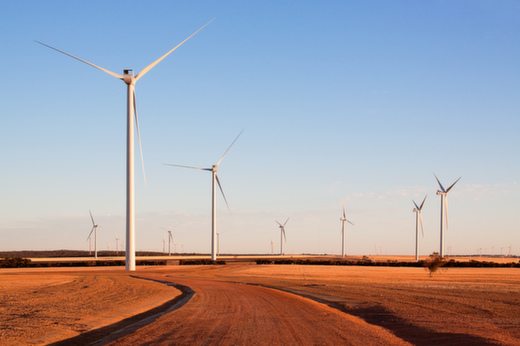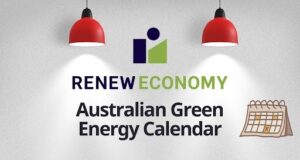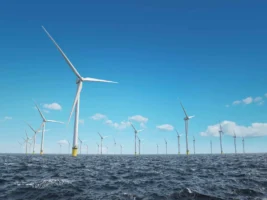Six months after the Liberal government lost power in Western Australia, it looks like a three year investment drought is about to be broken, with more than 1,000MW of wind and solar projects queuing up for connection approvals and finance in the state’s south west corner.
The Barnett government could barely hide its disdain for renewable energy, even go far as stating in 2013 that it would rather see wind and solar farms built in other states – and have WA consumers subsidise their construction – rather than built in WA.
The success of their indifference is show in this graph above, taken from this newly released report from the Australian Energy Market Operator.
A meagre total of just 2.6MW of large-scale renewables were built in 2014, 2015 and 2016. Over the same time, WA consumers added some 360MW of rooftop solar, even though the cost of the coal and gas dependent grid is subsidised to one third of its costs by the government.
The large-scale investment drought is finally coming to an end.
A whole range of solar projects have approached financial closure, including the 10MW Northam solar farm, the 20MW Emu Downs solar farm, the 30MW extension to the Greenough River solar farm, the 30MW Byford solar farm on the outskirts of Perth, and two solar projects of more than 100MW, including one in Merredin and another west of Northam.
Although the Barnett government looked like it was coming to realise the stupidity of its policy, and flagged the closure of the oldest coal generators that it had refurbished, the new Labor government has decided to fast track those closures and embrace new wind and solar projects.
The Australian Energy Market Operator estimates that another 700MW or so of large scale renewable generation is needed to meet WA’s share of the national large scale renewable energy target by 2020. (WA’s share of the 33,000GWh target is 3,773GWh).
 Western Power estimates that more than 1,000MW of large scale wind and solar is already in the pipeline, with more solar than wind.
Western Power estimates that more than 1,000MW of large scale wind and solar is already in the pipeline, with more solar than wind.
“When we look at our (new generation) forecasts over the next 10 years – all we can see is lots more renewable energy” says Sean McGoldrick, the head of asset development at Western Power. This includes utility-scale solar, wind, and some solar and batteries.
Still, there are some issues to be sorted out. One major issue is over the access regime to the grid, which got stalled last November when a package of reforms got lost in the election hustings and the switch in government.
A meeting of stakeholders was held in Perth last month, where Western Power and AEMO outlined an interim access regime – known as Generation Interim Access – which seeks to address an “old fashioned” rule that had required the network operator to expand the grid sufficiently to ensure that no output was curtailed.
This has added significantly to costs, which Western Power now wants to avoid. But developers of new plants are being warned that they may face some curtailments – of around 1 to 2 per cent a year of output – and not get paid for it. In return, they will enjoy lower investment costs.
AEMO also warned that it was likely the same conditions that now applied to new wind and solar farms in South Australia – the need for some synthetic inertia and fault ride through capability – will also likely be imposed in WA, particularly considering the loss of 380MW of thermal generation.
It also warned of potential load shedding in the south-west corner of the state because of potential supply issues.
Collgar, the operator of the largest wind farm in the state, a 207MW facility near Merredin, also presented at the forum, complaining about some forced curtailment on its output, and some of the “anachronistic” practices in the grid.
It said the rules were complicated, and change was often incremental and not “Grid 2.0”, which was frustrating given the pace of technology change, the increasing role of consumers and the potential in decentralisation, microgrids, storage and “DC” houses.












